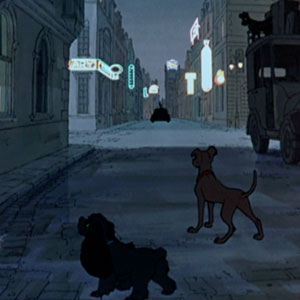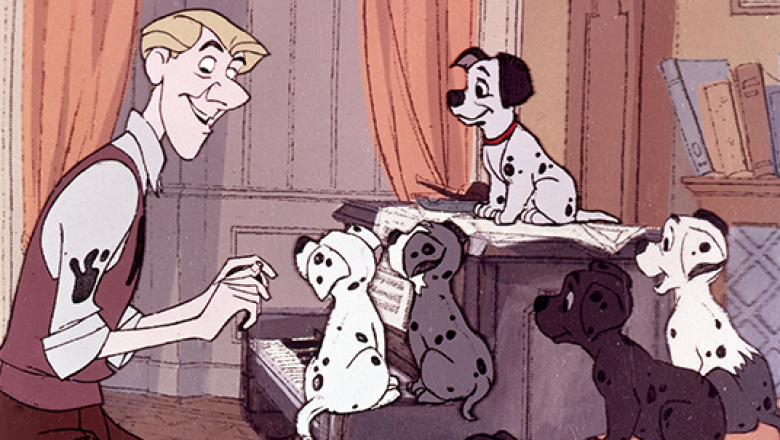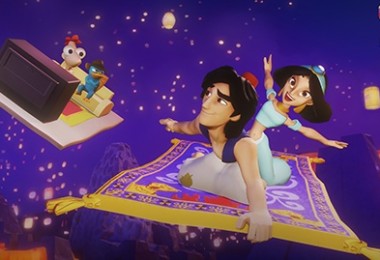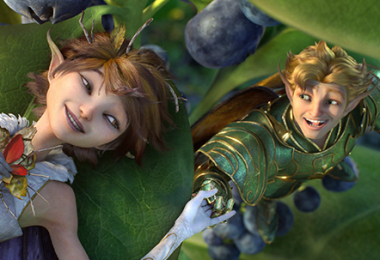Follow my lead and you’ll sniff out the reasons I think this classic Disney film is spot-on.
A self-professed dog lover, Walt Disney naturally came up with a doggoned good film when making a movie all about his beloved mutts. On more than one occasion, Walt appeared on his TV show with a canine co-star, and on the February 12, 1961 installment of his Walt Disney Presents series, Walt charmingly related the story of the film to a Dalmatian puppy with whom he had a purebred dog lover’s rapport. Like Walt himself, I’m a “dog person” and in a film entitled One Hundred and One Dalmatians you can be sure there are plenty of pooches for pooch lovers to love. Beyond stalwart Pongo, sweet and sensible Perdita and their 99 pups, the film boasts a cavalcade of canines, especially in the sensational Twilight Bark sequence. In fact, don’t blink (or bark) or you might miss several stars from another Disney dog-and-puppy show, Lady and the Tramp (1955), making cameo appearances, including Lady herself. But One Hundred and One Dalmatians doesn’t disappoint even if you are a cat person, thanks to the stalwart Sergeant Tibbs, who happens to be at the center of my favorite sight gag in the whole film: one skinny tabby trying to hide 99 dogs behind his back!

As fur-raising as so many elements of the film are — the suspense, the British spy thriller sensibility, and Marc Davis’s brilliant Cruella De Vil — I also love the film for its charm and that most elusive quality: “heart.” Best example (and certainly one of my best-loved scenes): the “Pongos” (as the Dalmatian clan is called by other critters) cozily watching TV, brilliantly observed by directing animator Eric Larson. “I just thought of what regular kids would do as they watched TV and took it from there,” Eric said. “One of the pups sits directly in front of the set blocking every else’s view. Another is constantly hungry. Their emotional attitudes were the attitudes of youngsters. With the parents, I tried to reflect back on how my parents treated me. It was a lot of fun doing that scene.”
One of the true joys of this sure-footed film is savoring the outstanding work of Eric and other members of that elite animation team known as the Nine Old Men. Milt Kahl was specifically assigned by Walt Disney to both redesign and animate Dalmatian devotee Anita, and the master animator based his design in part on Julie Andrews, then-famed as the star of Broadway’s My Fair Lady, little realizing that in just a few years Julie would be at the Disney Studios herself, starring in Mary Poppins (1964). Milt also used his fellow Nine Old Men team member, piano playing Frank Thomas, as a model for songwriter Roger Radcliff.






